You have probably been in a position where you are staring at a blank page, thinking how do I write an essay that earns me a good grade? Or how do I write an essay that says the writer is a professional without doing too much?
Well, the answer is by understanding what a good essay format looks like.
A good essay format is the best foundation for a good essay. It is your way of passing your message across without confusing your reader.
So if you are thinking about how to format a college essay or you just need basic knowledge on an essay format, keep reading.
This article breaks down the concept of an essay format in a way that makes sense to a toddler.
Key Takeaways
- A strong essay format organizes ideas clearly and boosts readability.
- Standard structure includes intro, body (3+ paragraphs), and conclusion.
- Proper formatting uses 12pt font, double spacing, and 1-inch margins.
- Different essay types (narrative, descriptive, persuasive, etc.) require tailored formatting.
- Citation styles like MLA, APA, and Chicago demand strict consistency.
- Undetectable AI tools help rewrite, humanize, and meet word count limits.
What Is an Essay Format?
An essay format is how your essay looks, that is, how it is organised on paper.
You can think of your essay format as a blueprint that shows your readers what you are about to say.
It is more about how you present your work rather than what you write. Think of your essay format as a way to keep your thoughts organized.
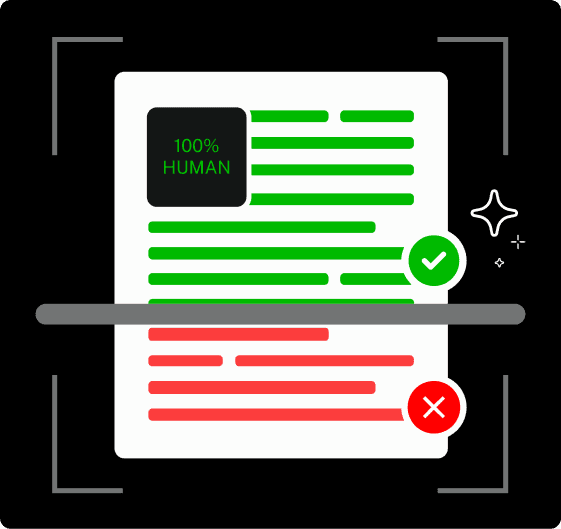
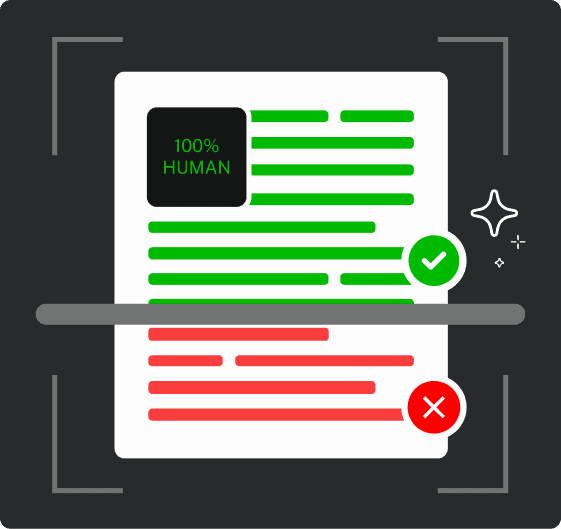
Never Worry About AI Detecting Your Texts Again. Undetectable AI Can Help You:
- Make your AI assisted writing appear human-like.
- Bypass all major AI detection tools with just one click.
- Use AI safely and confidently in school and work.
Your essay format is a way to make the right impression.
It includes everything from how to structure your paragraphs to how you arrange your talking points.
A good essay format gives you a better flow and a clearer argument.
A good essay format includes:
- How your paragraphs are organized
- Where your thesis statement goes
- Font, font size, spacing, and margins
- Proper citations and references
When your readers come across your essay, the first thing that they look at is how it is arranged.
That way, they can be assured that they won’t be confused.
You should see your essay format as a way to dress your ideas in the best outfit.
So, in a way, an essay format is how you introduce your essay without saying too much.
The Standard Essay Structure

Your essay needs structure. It helps you present your argument clearly.
Your essay should have at least five paragraphs. But you can write more than five if you want to.
The standard essay structure includes:
Introduction
The introductory paragraph is your opening.
It forms the basis and influences the whole structure of your essay. Your introduction gives you a chance to attract your readers.
Consider the introduction as the place where you make a good impression.
You can let your readers know about your topic through your introduction. So, readers are aware of your intentions and what will happen next.
Your introduction should not give too much away, it should be brief. It should be about 10-20 percent of your whole essay.
Start with a background and end with your thesis statement.
Body
This is where you introduce arguments that support your thesis statement. Your body should have at least three paragraphs. It should be at least 60-80% of your essay.
Your body is how you develop the idea you briefly mentioned in your introduction.
The purpose of your body is to explain the information you have gathered during your research.
Each argument or idea should be explained in a separate paragraph.
That is, one paragraph for one argument. Your essay is easier to follow that way.
You should also begin each new paragraph with a topic sentence. This sentence should mention the point that you wish to explain.
Then, explain the point in other sentences. Ensure that each paragraph connects with your main argument.
Every paragraph in the body should be connected. Your paragraphs should end in a way that transitions to the following paragraph.
Transition paragraphs ensure that you have a better flow.
Also, the interest of your reader is not lost at the end of each paragraph.
Conclusion
This is where you give a summary of your essay.
It is the final paragraph in your essay. It should be about 10-15% of your work.
A good conclusion should:
- Restate your thesis
- Summarize your main points
- Tie together your body
- Have a memorable sentence that leaves your readers with something to think about
Having your outline will make writing the essay much easier for you. This is because your thoughts are more organised.
You should have a rough draft of the structure of your essay before you begin.
It’s possible that after you’re done writing your essay, you think the structure is not organized.
You can use the Undetectable AI’s AI Essay Rewriter to rewrite.
Our rewriter will help analyse your work and rewrite it in a way that improves flow and engages readers.
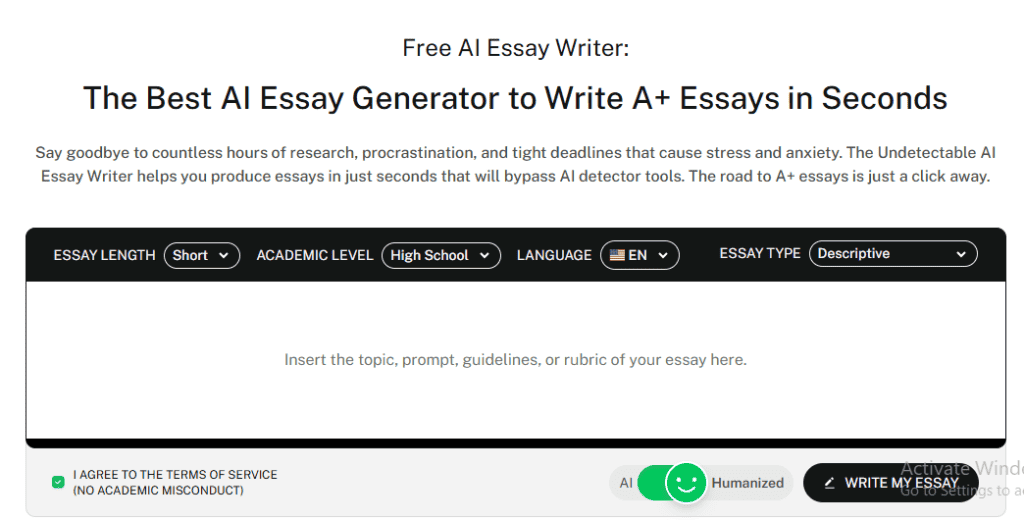
You can also use our AI Humanizer to improve the readability of your essay. That way, your essay sounds more human-like and conversational.
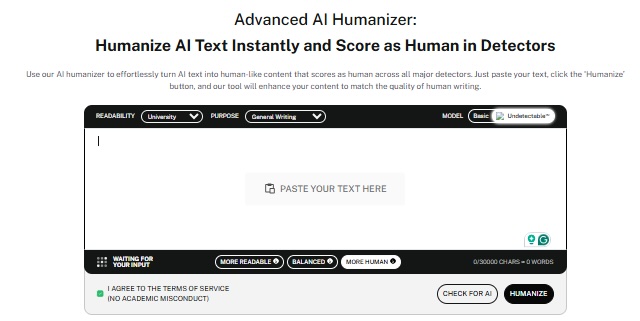
Formatting Guidelines: Key Elements
The format of an essay may seem like a small detail when writing. It affects how your essay will be graded. A wrongly formatted essay can make readers unwilling to read through it.
Here are the key elements on how to format an essay:
Font
The font used can make your essay easier or harder to read.
The Times New Roman, Arial, and Calibri fonts are the best choices because they are easy to read. Such fonts are appropriate if you want your essay to look professional.
Even if Comic Sans looks fun to write with, it is not a smart choice for most documents. When your essay needs to be graded or published, do not use fonts like Papyrus or Courier New. Also, for readability and ease, your font size should be 12.
Spacing and Margin
Your essay should be written using a 1.5 or double line spacing format. It makes your essay easy to read.
You should also use a 1-inch margin on the top, bottom, left, and right of your paper. That way, your essay is much easier to read and your professor has room to write comments.
Page Numbers and Headers
Put your last name and the page number in the top right corner of every page. Page numbers should be written as headers and not part of the text.
Always remember to add your name, your professor’s name, the class, and the date in the top left corner of the first page of your essay.
Paragraph Indentation
The first line of your paragraph should always be indented. Your indentation should be half an inch or five spaces. You can also do this by pressing the Tab key.
Title
Your essay should always have a title. The right position for your title is the center of your essay.
Titles should come before the first paragraph of your essay. It should be the same font as your text, but not necessarily the same size.
One vital part of writing is staying within the word count. When you must exceed your word limit, do not go more than 10% over it.
A simple way to stay within the word count is by using AI tools.
Tools like the Undetectable AI Word, Character, and Sentence Counter help you keep track of your word count and ensure that your essays meet length and formatting requirements.

Of course, formatting is only one part of the grade. A powerful conclusion that leaves your reader impressed is just as important.
The AI Conclusion Generator helps you build impactful final paragraphs using your own essay content — so your structure looks sharp and your message ends strong.
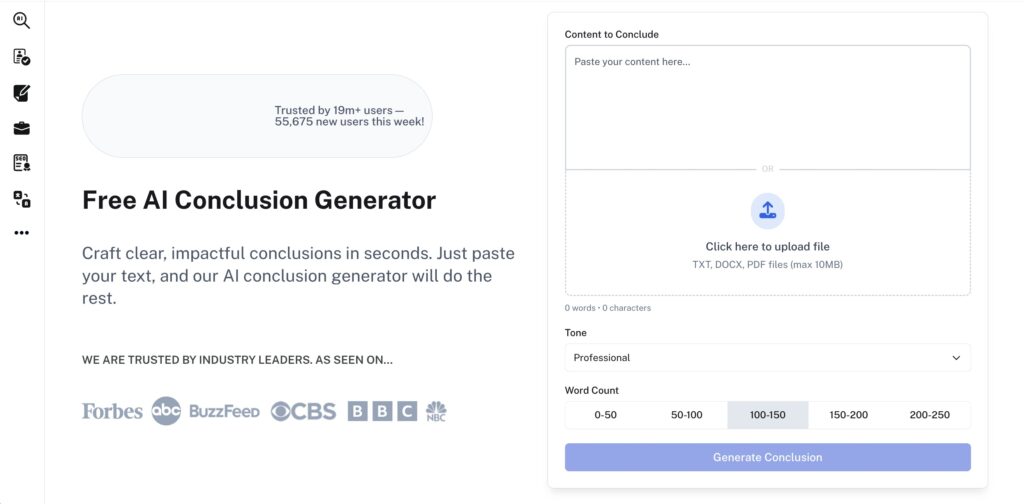
Create the Perfect Essay Title
If you’re struggling to come up with a strong, academic-sounding title that fits your essay’s tone, try our Undetectable AI’s AI Title Generator.
It’s designed to instantly craft titles that sound professional, relevant, and aligned with your essay’s topic and structure.
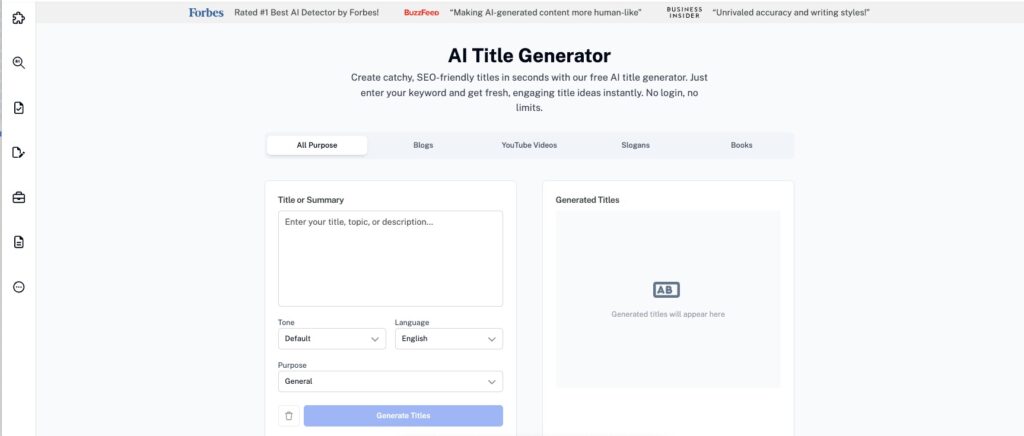
Whether you need something formal for an academic paper or creative for a reflective piece, it helps you strike the right balance between clarity and originality.
Common Types of Essay Formats
The kind of essay you are writing will determine the format to be used. Different essays require their own technique.
However, the structure is the same. That is, an introduction, body, and conclusion.
Here are the common types of essay formats:
- Narrative Essay: This type of essay tells a story. Therefore, your format has to tell the story in the order in which they happen. You have to create an intro and conclusion but the body of the essay follows a timeline of an event.
- Descriptive Essay: This essay requires painting a picture using words. Here you have an introduction, but your body needs to be arranged in a way that describes a particular incident clearly.
- Expository Essay: The aim of this essay is to give information about a particular topic. You follow the standard essay structure, but each paragraph in your body has to cover different information about your topic.
- Persuasive Essay: With this essay, you have to convince your readers of your point of view. The perfect way to do so is by creating different paragraphs that support your argument. With each argument presenting necessary evidence supporting your claim.
How to Format Citations in an Essay
Citations are an important part of any type of writing.
It shows the extent of your research. It also helps readers find your sources for extra knowledge.
So it is important that you know how to cite any referenced work properly.
Students and professionals use the MLA, APA, and Chicago citation styles the most. While these are the most usual standards, every citation style sets its own rules.
This is how to format citations in an essay, depending on the style:
MLA
This style is commonly used in English and the humanities. For MLA, mention the author’s name, then insert the page number where you found the quote.
You can also choose to have a separate page to list out the works cited.
On this page, the proper way to reference would be by stating the author’s Surname. First name. Title of Reference. Title of Container, Other contributors, Version, Numbers, Publisher, Publication Date, Location.
If you’re writing in MLA style and want to avoid mistakes in formatting, try our MLA Citation Generator.
It builds clean, accurate citations for books, websites, journal articles, and more so your Works Cited page is perfectly formatted without the stress.
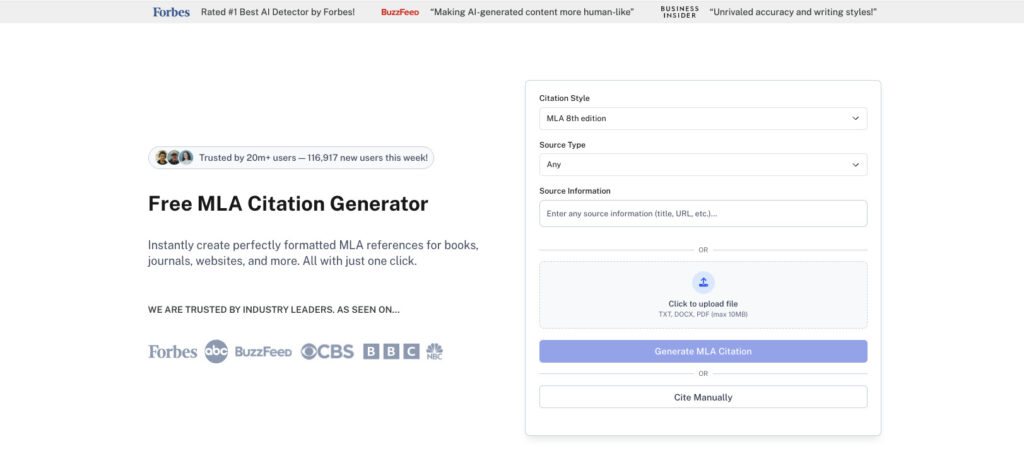
Just enter your source details, and the tool handles the rest, saving you time and helping you stay consistent throughout your essay.
APA
The APA Format is commonly used in psychology and social sciences. APA Style requires you to write the author’s name and the year of publication in brackets just beside it.
You should also have a page called the reference page. On this page, you list out your sources alphabetically. You have to state the author’s name and year of publication as well.
Want to skip the formatting guesswork? Use the APA Citation Generator to quickly create clean, properly styled references.
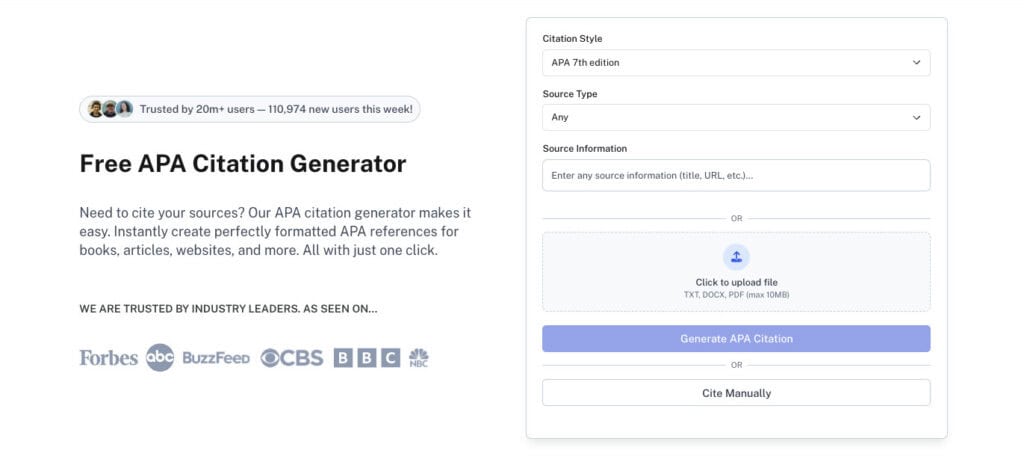
Just enter the author, title, year, and other details, and it will handle the rest: saving time and reducing formatting errors.
Chicago
This style is used in history classes. It requires you to reference your sources using footnotes at the bottom of the page where referencing occurs.
You also need to have a separate page for the bibliography. When writing your bibliography, the first line should be a ‘Hanging indent’ while other lines are indented.
One thing to note during citation is uniformity. You have to be consistent with whichever style you choose. Sometimes your style is determined by the rules you are required to follow.
Examples of Correctly Formatted Essays
- This is an example of a correctly formatted essay using the APA in-text citation:
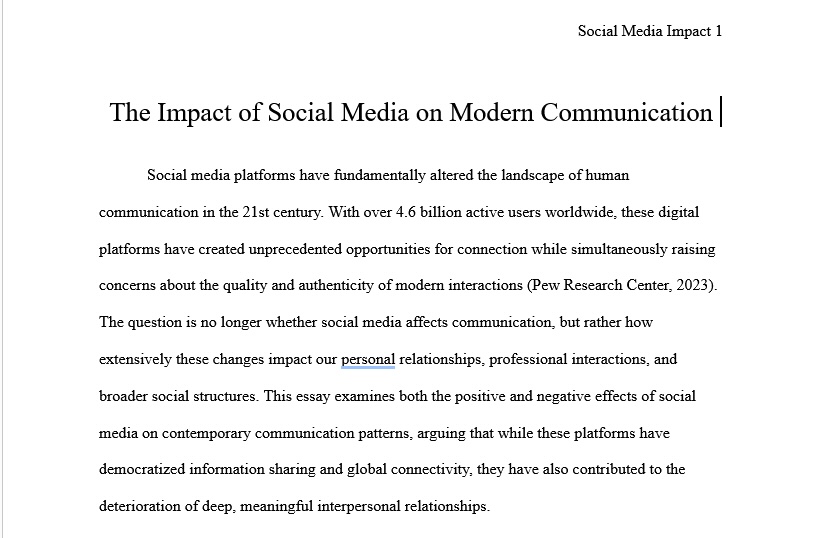
- This is an example of a correctly formatted essay using the MLA in-text citation:
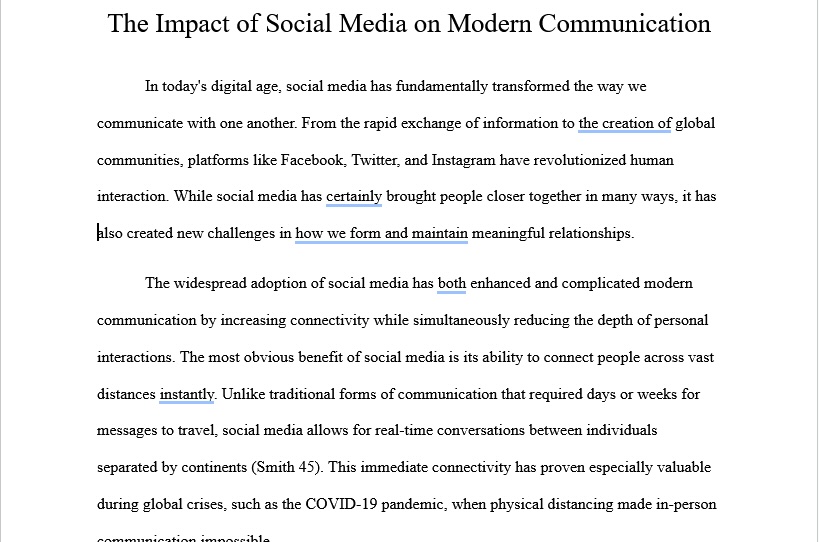
Ready to see the difference? Launch our AI Detector and Humanizer in the widget below!
FAQs About Essay Format
What is The Most Commonly Used Essay Format?
A five-paragraph structure is the format used most often in essays. It is the best format for short essays.
It is straightforward to read. When citing, the MLA style is most generally used.
How Long Should an Essay Introduction Be?
It depends on how many words you use in the essay.
You should have up to 4 to 6 sentences for a five-paragraph essay. Just ensure that your introduction accounts for 10-15% of your entire work.
Do All Essays Require a Title Page?
No. Most essays, especially short ones, do not require a title page. So if you include any important information, you can just write it in the top left corner of your first page.
Title pages are more common with research papers. When in doubt, you can just refer back to the guidelines you were given, if available.
Can Formatting Errors Affect My Grade?
Yes. Your essay format is as important as the content of your essay. It might be a big part of what affects your final grade.
A bad format means anyone who is reading your essay will definitely struggle. It also tells your professor that you adhere to the required details.
Conclusion
Knowing how to write an essay format can be tricky.
You have to learn the proper structure, font, and citation, and it seems like a lot of work to understand.
However, once you get the hang of it, you are on your way to writing the best essays.
Good formatting is about presenting your ideas as clearly and professionally as possible. Nobody wants to read an improperly written essay.
When in doubt about the proper format, use the tools that Undetectable AI has to offer.
